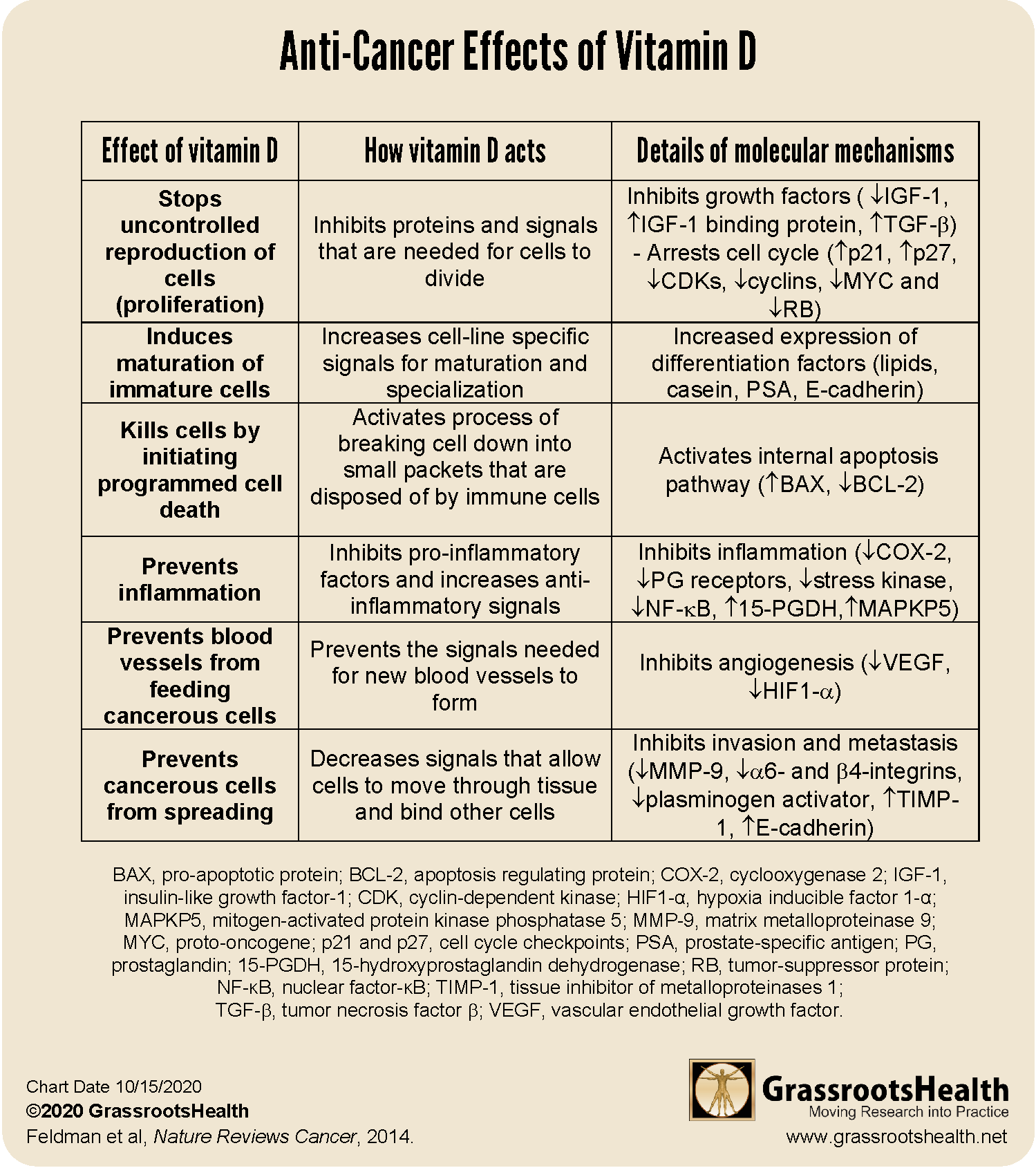Published on September 15, 2023
Depending on the type of cancer, vitamin D alone can potentially reduce the risk of cancer by about 25% to 80%
Key Points
- Vitamin D has known anticancer effects, and much research has been published over the last several decades showing a link between vitamin D levels and cancer risk; depending on the type of cancer, vitamin D alone can potentially reduce the risk of cancer by about 25% to 80%
- A study found that the highest survival rate for individuals diagnosed with lymphoma was achieved by the group with the highest vitamin D level, over 33 ng/ml (81 nmol/L); approximately 22% more survived among the group with the highest vitamin D levels compared to those with the lowest
 World Lymphoma Awareness Day is September 15th, today. It is a day dedicated to raising awareness of this increasingly common form of cancer, and to calling for improvements in diagnosis, treatment, and tracking of lymphomas.
World Lymphoma Awareness Day is September 15th, today. It is a day dedicated to raising awareness of this increasingly common form of cancer, and to calling for improvements in diagnosis, treatment, and tracking of lymphomas.
What is Lymphoma?
- it is the most common type of blood cancer, affecting the white blood cells (lymphocytes) that our body uses to help fight infections
- it is the 3rd most common childhood cancer
- nearly one million people world-wide are currently diagnosed with lymphoma
Vitamin D May Help Prevent Cancer and Improve Outcomes
Vitamin D has known anticancer effects, and much research has been published over the last several decades showing a link between vitamin D levels and cancer risk. Depending on the type of cancer, vitamin D alone can potentially reduce the risk of cancer by about 25% to 80%.
One study by Treteli et al. included 658 Norwegian patients diagnosed between 1984 and 2004 with either breast cancer, colon cancer, lung cancer or lymphoma. Vitamin D levels were determined within 90 days of diagnosis, and subjects were followed until 2008. Researchers monitored for death. The analysis divided patients into four vitamin D groupings of roughly equal size and plotted survival over time for each of the different groups.
The study found that the highest survival rate was achieved by the group with the highest vitamin D level, over 33 ng/ml (81 nmol/L). Approximately 22% more survived among the group with the highest vitamin D levels compared to those with the lowest.
How Vitamin D Fights Cancer
The active form of vitamin D, calcitriol, controls multiple pathways associated with the life cycle of the cell including those involved with reproduction, maturation and programmed death. Calcitriol regulates the production of a number of signals and growth factors at the genetic level. As detailed in the table above, some of the signals turned on by vitamin D stimulate growth, development, maturation and programmed cell death while other signals inhibit inflammation, prevent blood vessels from being made that can feed cancer cells, and stop the spread of the cancer to other parts of the body.
More on Vitamin D’s Anti-Cancer Effects
Could Low Vitamin D Levels be Affecting Your Health?
Measure your:
- Vitamin D
- Magnesium PLUS Elements
- Omega-3 Fatty Acids
- hsCRP
Did you know that each of the above can be measured at home using a simple blood spot test? As part of our ongoing research project, you can order your home blood spot test kit to get your levels, followed by education and steps to take to help you reach your optimal target levels. Start by enrolling and ordering your kit to measure each of the above important markers, and make sure you are getting enough of each to support better mood and wellbeing!
Build your custom kit here – be sure to include your Omega-3 Index (Only or with Ratios), Magnesium PLUS Elements, and hsCRP along with your vitamin D.
Start Here to Measure Your Levels







